Potrebujeme váš súhlas na využitie jednotlivých dát, aby sa vám okrem iného mohli ukazovať informácie týkajúce sa vašich záujmov. Súhlas udelíte kliknutím na tlačidlo „OK“.
ASTM D7687-11
Standard Test Method for Measurement of Cellular Adenosine Triphosphate in Fuel, Fuel/Water Mixtures, and Fuel-Associated Water with Sample Concentration by Filtration
Automaticky preložený názov:
Štandardná skúšobná metóda pre meranie Cellular adenosintrifosfátu v paliva, palivo / voda, a palivové-spojenie s vodou sa vzorkou Koncentrácia filtráciou
NORMA vydaná dňa 1.4.2011
Informácie o norme:
Označenie normy: ASTM D7687-11
Poznámka: NEPLATNÁ
Dátum vydania normy: 1.4.2011
Kód tovaru: NS-38958
Počet strán: 9
Približná hmotnosť: 27 g (0.06 libier)
Krajina: Americká technická norma
Kategória: Technické normy ASTM
Kategórie - podobné normy:
Anotácia textu normy ASTM D7687-11 :
Keywords:
adenosine triphosphate, ATP, bacteria, bioburden, biodeterioration, biodiesel, biofuels, biomass, cellular, cellular-ATP, diesel, fuel, fuel-oil, fungi, gasoline, microbial contamination, microbiology, microorganisms, ICS Number Code 75.160.20 (Liquid fuels)
Doplňujúce informácie
| Significance and Use | ||||||||||||||||||||||||||||||||||||
|
This test method measures the concentration of cellular-ATP present in the sample. ATP is a constituent of all living cells, including bacteria and fungi. Consequently, the presence of cellular-ATP is an indicator of total metabolically active microbial contamination in fuels. ATP is not associated with matter of non-biological origin. This test method is similar to Test Method E2694 except for the volumes sampled. This test method differs from Test Method D4012 in that it utilizes filtration and wash steps designed to eliminate interferences that have historically rendered ATP testing unusable with complex organic fluids such as fuel, fuel/water mixtures and fuel-associated water. This test method differs from Test Method D7463 in several regards: Test Method D7463 reports relative light units (RLU). Consistent with Test Method D4012 and E2694, this test method reports ATP concentration. This test method detects only cellular-ATP and it can be used to detect cellular-ATP in fuels and fuel stocks from which small quantities of water do not separate readily (for example, ethanol blended gasoline containing ≥ 5% v/v ethanol). Test Method D7463 cannot be used to recover ATP from fuels from which small quantities of water do not separate readily (for example, ethanol blended gasoline containing ≥ 5% v/v ethanol). This test method measures cellular-ATP in a single measurement (as pg ATP/mL). Test Method D7463 detects total ATP (as RLU) and extra-cellular ATP (as RLU) using two separate analyses and permits computation of cellular-ATP (as RLU) as the difference between total and extracellular ATP. Test Method D7463 suggests a nominal 500 mL fuel sample volume. This test method suggests a nominal 20 mL fuel sample. This test method can be used with all fuels specified in Specifications D396, D975, D1655, D2069, D2880, D3699, D6751, and D7467 and other fuels with nominal viscosities ≤ 75 cSt at 20 ± 2°. The ATP test provides rapid test results that reflect the total bioburden in the sample. It thereby reduces the delay between test initiation and data capture, from the 36 to 48 h (or longer) required for culturable colonies to become visible, to approximately 5 min. Although ATP data generally covary with culture data in fuel, fuel/water mixtures, and fuel-associated water, different factors affect ATP concentration than those that affect culturability. Culturability is affected primarily by the ability of captured microbes to proliferate on the growth medium provided, under specific growth conditions. Consequently, a proportion of the active or inactive microbial population present in a sample may be viable but not detected by any one culture test. ATP concentration is affected by: the microbial species present, the physiological states of those species, and the total bioburden (see Appendix X1). One example of the species effect is that the amount of ATP per cell is substantially greater for active fungal cells than bacteria. Within a species, cells that are more metabolically active will have more ATP per cell than dormant cells, such as fungal spores. Because fungal spores are more hydrophobic than active fungal material (mycelium), spores may be the only indicator of fungal proliferation when fuel samples are taken from some fuel systems, but they will not be detected by a test for ATP. The greater the total bioburden, the greater the ATP concentration in a sample. The possibility exists that the rinse step (11.15) may not eliminate all chemical substances that can interfere with the bioluminescence reaction (11.39). The presence of any such interferences can be evaluated by performing a standard addition test series or dilution series as described in Appendix X4. |
||||||||||||||||||||||||||||||||||||
| 1. Scope | ||||||||||||||||||||||||||||||||||||
|
1.1 This test method covers a protocol for capturing, extracting and quantifying the cellular adenosine triphosphate (cellular-ATP) content associated with microorganisms found in fuels, fuel/water mixtures and fuel-associated water. 1.2 The ATP is measured using a bioluminescence enzyme assay, whereby light is generated in amounts proportional to the concentration of cellular-ATP in the samples. The light is produced and measured quantitatively as relative light units (RLU) which are converted by comparison with an ATP standard, computation to pg ATP/mL and optional further transformation to Log10[pg ATP/mL]. 1.3 This test method is equally suitable for use as a laboratory or portable method. 1.4 This test method is limited to fuels with a nominal viscosity ≤ 75cSt at test temperature. 1.5 This test method detects ATP concentrations in the range of 5.0 pg ATP/mL (0.699 log10[pg ATP/mL]) to 100 000 pg ATP/mL (5.000 log10[pg ATP/mL]) for 20 mL samples of fuel or fuel/water mixtures, and 20 pg ATP/mL (1.301 log10[pg ATP/mL]) to 400 000 pg ATP/mL (5.602 log10[pg ATP/mL]) for 5 mL samples of fuel-associated water. Note 1—These ranges were calculated with the formula for calculating sample ATP in pg/mL provided in 12.1 based on the minimum recommended RLU for a 1 ng ATP/mL standard when using the reagents specified in Section 7 and the luminometer specified in 6.4 and corrected with a reagent-method blank as determined in Appendix X5. 1.6 Providing interferences can be overcome, bioluminescence is a reliable and proven method for qualifying and quantifying ATP. This test method does not differentiate between ATP from different sources, for example: from different types of microorganisms, such as bacteria and fungi. 1.7 The values stated in SI units are to be regarded as standard. No other units of measurement are included in this standard. 1.8 This standard does not purport to address all of the safety concerns, if any, associated with its use. It is the responsibility of the user of this standard to establish appropriate safety and health practices and determine the applicability of regulatory limitations prior to use. |
||||||||||||||||||||||||||||||||||||
| 2. Referenced Documents | ||||||||||||||||||||||||||||||||||||
|
Podobné normy:
Historická
1.12.2012
Historická
1.9.2010
Historická
1.6.2014
Historická
1.8.2010
Historická
1.10.2010
Historická
1.5.2014
Odporúčame:
EviZak - všetky zákony vrátane ich evidencie na jednom mieste
Poskytovanie aktuálnych informácií o legislatívnych predpisoch vyhlásených v Zbierke zákonov od roku 1945.
Aktualizácia 2x v mesiaci !
Chcete vedieť viac informácii ? Pozrite sa na túto stránku.


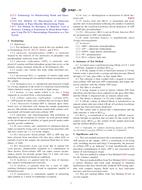
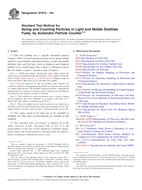 ASTM D7619-12b
ASTM D7619-12b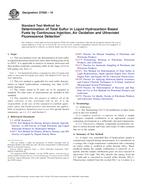 ASTM D7620-10
ASTM D7620-10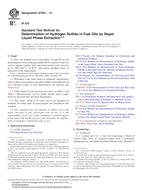 ASTM D7621-14
ASTM D7621-14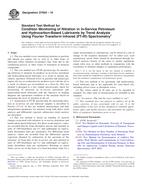 ASTM D7624-10
ASTM D7624-10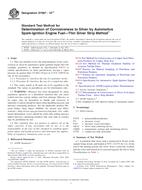 ASTM D7667-10e2
ASTM D7667-10e2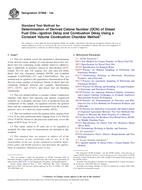 ASTM D7668-14a
ASTM D7668-14a
 Cookies
Cookies
